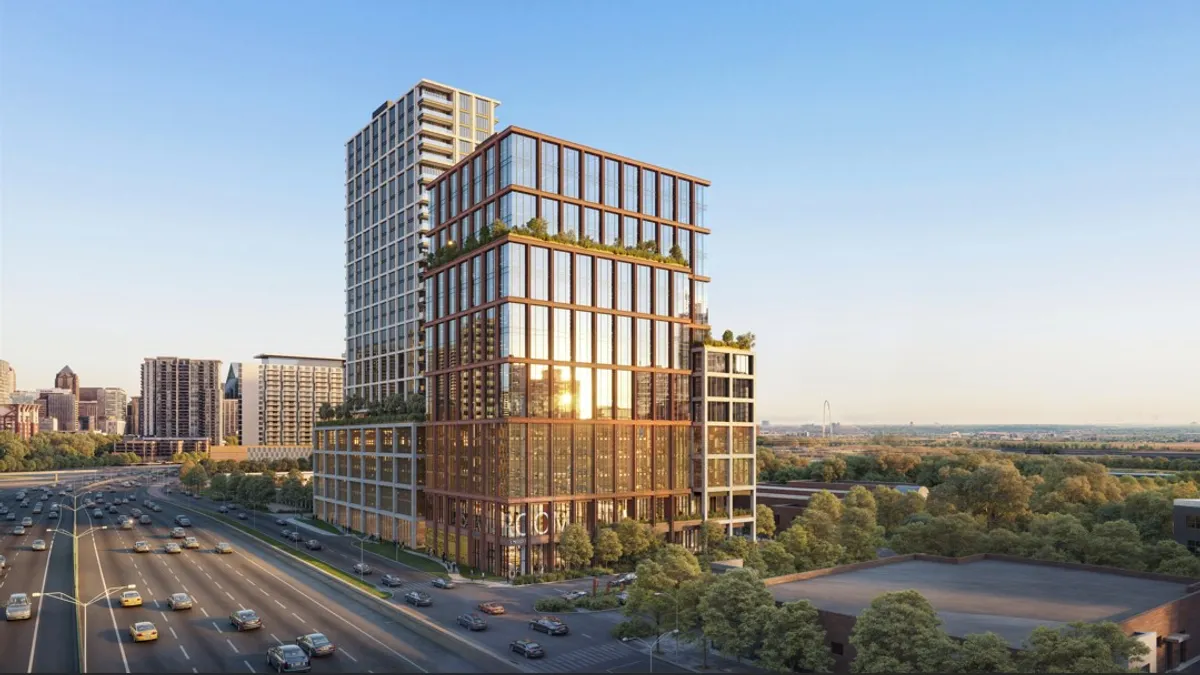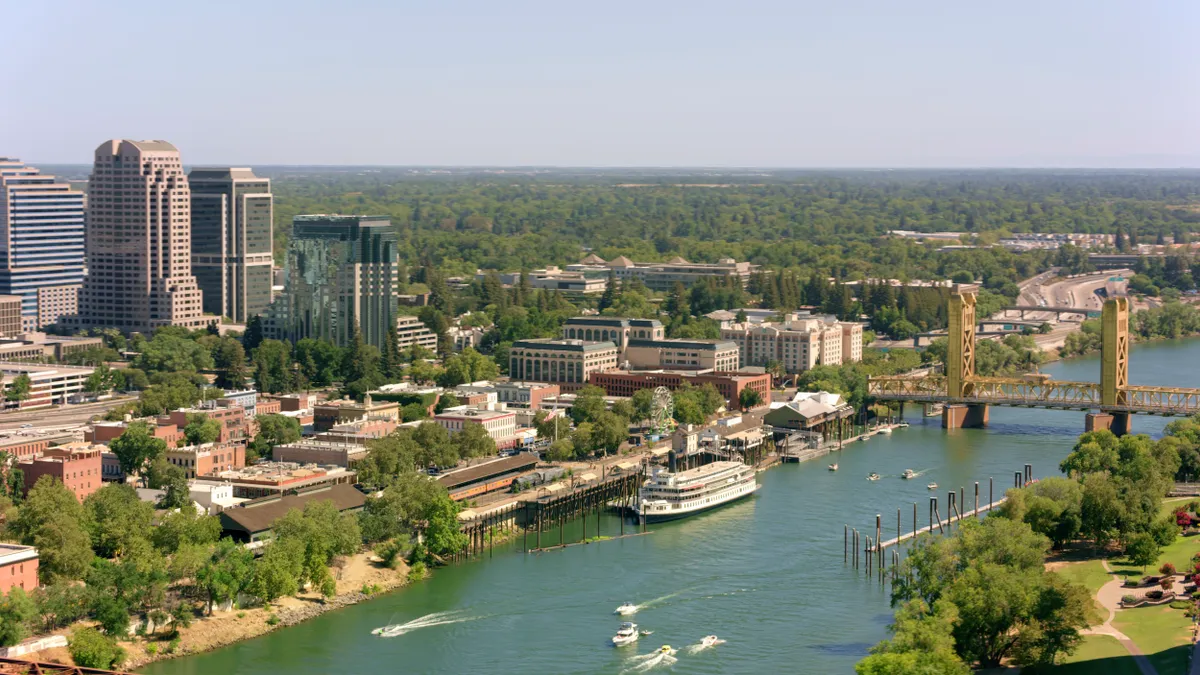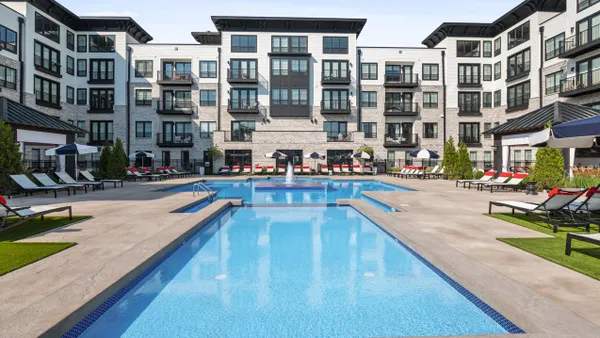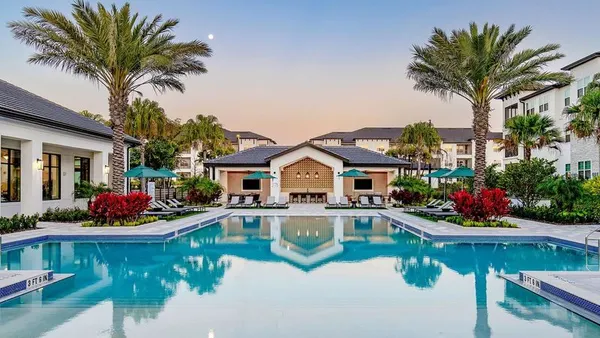McCourt Partners has a rich real estate history dating to its origin in the 1970s as an apartment owner in Boston. The Los Angeles-based firm has built projects in New York City, Los Angeles, Dallas, London, Miami and Austin, Texas. Currently, it has over 10 million square feet of assets in various stages of planning, development and management.
However, to many people, the McCourt name remains more synonymous with sports. Founder and executive chairman Frank McCourt currently owns the French football club Olympique de Marseille, and he had a tumultuous tenure as owner of the Los Dodgers from 2004 to 2012.
Jordan Lang, president of McCourt, joined the company after the Dodgers sale. Still, he says the event had a transformative effect on the real estate operation.
“Once the sale of the team happened, it allowed us to take a lot of capital and redeploy it in the heart and soul of the McCourt organization, and that's real estate,” Lang said. “That's what led us to supercharge the real estate efforts in 2013 and 2014.”
That turnaround led to a focus on long-term projects, which is paying off now. In the past year, McCourt kicked off Halo Vista, a $7 billion mixed-use development with over 28 million square feet of commercial, residential and industrial spaces in Phoenix. The project is being developed in partnership with MACK Real Estate Group and is adjacent to the Taiwan Semiconductor Manufacturing Corp.’s campus.
In 2025, the company plans to continue growing its footprint, with two significant projects in its pipeline in Wellington, Florida, and Dallas. “We love being able to place make and help have a greater impact on a city and on a submarket,” Lang said. “We wanted to have projects that were also pretty straightforward, and we're able to provide housing. So we really started to focus on new investments that were at that scale.”
Here, Lang talks with Multifamily Dive about the projects that make sense right now, the challenges with equity investments and why it's not giving up on California.
This interview has been edited for brevity and clarity.
MULTIFAMILY DIVE: How do you see 2025 playing out from a development perspective?
JORDAN LANG: We have been actively tracking the lack of new development starts over the last couple of years in a few key markets like Los Angeles, Nevada and Texas. We've seen rents, unfortunately, go up dramatically, and we'll see what happens with rates.
But the calculus for new development starts is now coming back into the range of the strike zone for capital. We see that in Arizona, Nevada, Texas and even California.
How have the rate increases impacted new development?
Rates have impacted the attractiveness of new development starts. A year and a half ago, the 10-year Treasury was 5%. So, a 5.5% development yield on new apartments didn't look good.

There's the hope that if inflation can cool, we can get that spread up to 150 basis points, which I can see on a wrap product out here on the West Coast. We have a couple of the projects under contract now that are wrap.
What about podium projects?
I think podium is tricky out West unless you're in an amazing submarket with extraordinarily high rents.
It's a function of cost. Wrap is about 20% less. And if you find a well-located product with the space to do wrap and you can command similar rent, that's the sweet spot we're looking for.
What is the most challenging part of putting together development deals right now?
Limited partner capital is being careful about where to invest right now. It's the most scarce form of the capital stack. We've seen this massive injection of debt instruments going up to 80%, 85% of the capital stack. We see developer equity historically in place on these assets and the gap financing right now is the LP capital.
It's an issue in a lot of places. I think it became an issue faster on the West Coast because cap rates are lower. As rates crept up, that spread was heavily compressed for a long time.
Developers have left California. It sounds like you are still optimistic about building in the state.
We understand the difficulty because it takes a lot of time to get projects entitled. But we're hopeful.
We think that there's a lot of positive sentiment right now in the public sector and a lot of alignment. We think that public partnerships are going to increase. Ultimately, everyone wants to see the creation of more housing — workforce housing, affordable housing and market-rate housing — and there hasn't been a lot of it. We are seeing some positive signs. We're seeing zoning reforms.
California is a beautiful place, and a lot of people want to live here. When rates are 0%, it's easier to underwrite to a 5%. With rates at 5%, it's hard to underwrite to a 5.25%. So I think we've seen the tides turn, and we're underwriting a lot of acceleration and are hopeful that capital is going to want to come back here.
LA is the second-largest city in the country. It's a beautiful place, and has always, historically, been an absolutely incredible place to invest.
Click here to sign up to receive multifamily and apartment news like this article in your inbox every weekday.











